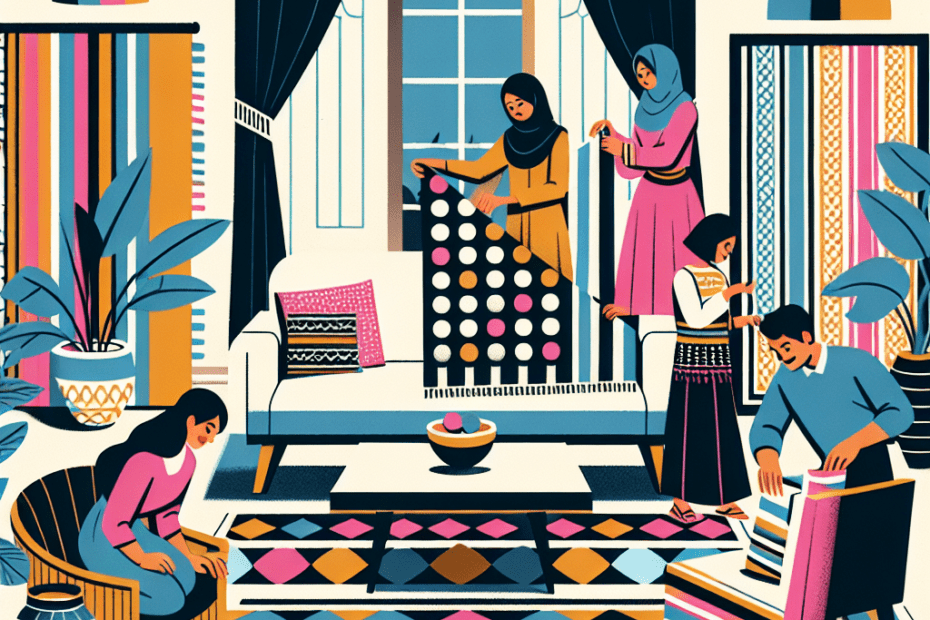“`html
Introduction
When it comes to home styling, people often find themselves questioning how to effectively mix patterns and solids without overwhelming their space. According to a 2022 survey from the National Home Styling Association, 65% of homeowners expressed difficulty in successfully incorporating bold designs into their existing decor. To help with this common dilemma, here are some useful tips on mixing patterns and solids in home styling to create a cohesive and aesthetically pleasing environment.
Understanding the Basics of Patterns and Solids
Patterns carry their own unique visual language and can range from geometric designs to florals and abstract shapes. On the other hand, solids represent simplicity and can ground a space, providing a backdrop for bolder elements. The trend of mixing patterns and solids allows one to infuse creativity while maintaining harmony and order in interior spaces.
Tips for Mixing Patterns and Solids
1. Start with a Neutral Base
The first step in blending patterns and solids is to establish a neutral base. Choose neutral colors such as whites, grays, or beiges for large pieces of furniture or walls. This neutral foundation provides versatility, letting patterns stand out as accents rather than overpowering the room.
2. Use the 60-30-10 Rule
This decorating formula suggests that 60% of the room should be a dominant color, 30% a secondary color, and 10% an accent color. Applying this rule helps balance the interplay between bold patterns and solid hues. For instance, a living room might have solid-colored walls and large furniture items, patterned throw pillows and area rugs, and a few small accessories in an accent color.
3. Play with Scale and Size
Mix patterns of different scales to keep things interesting. Large patterns can complement smaller ones and help to create a focal point in any room. For example, a large floral print on a sofa can be paired with a smaller geometric pattern on a chair, emphasizing variety and contrast.
4. Maintain a Consistent Color Palette
To prevent a chaotic appearance, maintain a consistent color palette across all patterns and solids. Choose colors that complement each other for a more cohesive look. This can be achieved by selecting one or two common colors within the patterns and spreading them throughout the room.
5. Balance with Solids
Solids play a crucial role in balancing out the busy nature of patterns. Incorporating solid elements such as curtains, lampshades, and large furniture pieces can provide visual rest and enhance the presence of patterned pieces without cramming the space.
Examples of Successfully Mixed Patterns and Solids
| Room Element | Patterns and Solids Combination |
|---|---|
| Living Room | Neutral walls, solid-colored sofa, patterned area rug and cushions |
| Bedroom | Solid-colored bedspread, patterned throw and pillows, neutral curtains |
| Dining Room | Patterned wallpaper, solid wood dining table, minimalist chairs |
Key Takeaways
- Establish a neutral base to let patterns stand out.
- Apply the 60-30-10 rule for balance in color distribution.
- Mix different scales of patterns for richness and variety.
- Consistent color palettes bind the patterns and solids together.
- Use solids to counterbalance the intensity of patterns.
FAQ
-
What is the best rule for mixing patterns and solids?
The 60-30-10 rule is highly recommended. It helps maintain balance by using 60% of a room’s dominant color, 30% of a secondary color, and 10% of an accent color.
-
Can every room have different patterns?
Yes, but maintaining a cohesive color palette throughout your home ensures harmony, even if the patterns differ from room to room.
-
What are the most common mistakes people make?
A common mistake is using patterns that clash without a consistent color scheme, resulting in a chaotic look.
-
How can I make bold patterns work in small spaces?
Choose one feature wall or piece of furniture to apply a bold pattern, keeping other elements solid and neutral to avoid overwhelming the space.
-
Are there patterns that work best with solids?
Geometric and floral patterns often work well with solid colors, as they can either complement or stand in contrast to the simplicity of solids.
“`
